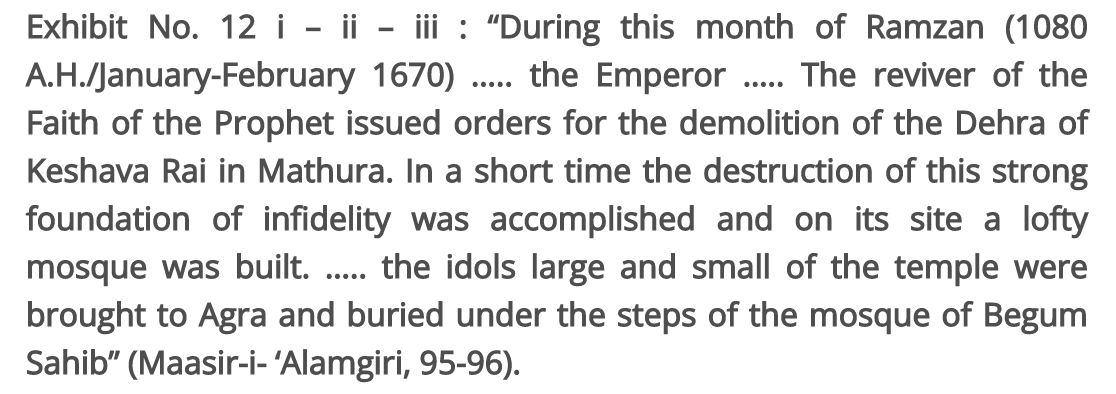
The Persian Maasir-I-Alamgiri clearly describes Aurangzeb's order to destroy Mathura & Kashi temples in Jan-Feb, 1670. Aurangzeb ordered the mosque to be built on top of the destroyed Keshavanth Mandir in Mathura, one of the most magnificent temples in India. 







Accomplishing this “seemingly impossible work showed “strength of the Emperor’s faith”. Aurangzeb celebrated by taking the broken Murtis & burying them under the steps of the mosque at Agra Fort, so that people would keep stepping on them and Hindus would be humiliated forever. 



The great temple of Keshava Rai at Mathura was built by Bir Singh Deo Bundela during Jahangir’s time at a cost of 33 lakhs. The Dehra of Keshava Rai was one of the most magnificent temples ever built in India and enjoyed veneration of the Hindus throughout the land.
References:
Maasir I Alamgiri
ia601608.us.archive.org/7/items/in.ern…
Images from Chattrapati Shivaji Maharaj Museum of Indian history
factmuseum.com/aurangzeb-as-h…
Maasir I Alamgiri
ia601608.us.archive.org/7/items/in.ern…
Images from Chattrapati Shivaji Maharaj Museum of Indian history
factmuseum.com/aurangzeb-as-h…
• • •
Missing some Tweet in this thread? You can try to
force a refresh




























